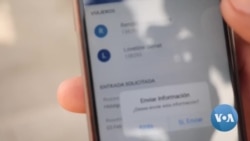The number of migrant encounters at the United States-Mexico border dropped nearly 40% — from a record of about 252,000 in December 2022 to about 156,000 in January — according to U.S. Customs and Border Protection.
CBP credits the decrease to a parole program that began on January 5 for migrants from Cuba, Haiti, Nicaragua, and Venezuela, the four countries that had the highest numbers of migrants trying to cross into the U.S. during the preceding months. The program is designed to decrease unauthorized migration, including crossing between ports of entry.
The humanitarian parole program allows up to 30,000 migrants per month from each country to enter the U.S. and live for up to two years. Once their applications are approved, they are allowed to proceed with travel arrangements.
The program also makes it easier to quickly expel migrants from those nations if they cross the border without authorization.
On Monday, Alex Nowrasteh, director of economic and social policy studies at the Cato Institute, published a study showing that the number of migrants from the four countries arriving at the border declined by 75.8% in January.
“The number of [Venezuelan, Cuban, Nicaraguan, and Haitian] migrants showing up at the border fell to 22,082 in January of 2023, down from 91,330 in December 2022 — a drop of 69,248. This is consistent with Cato’s theory that legal migration deters illegal migration and border crossings,” Nowrasteh wrote.
CBP Acting Commissioner Troy Miller said in a news release that the trends “have continued into February, with average encounters of Cubans, Haitians, Nicaraguans, and Venezuelans plummeting.”
“The January monthly operational update clearly illustrates that new border enforcement measures are working, with the lowest level of Border Patrol encounters between Ports of Entry since February of 2021,” Miller said in a statement.
Migrants from Cuba, Haiti, Nicaragua, and Venezuela must apply for legal entry while outside the U.S. under the humanitarian parole authority. They must meet all health requirements, pass a background check, and have a U.S. sponsor.
Using the CBP One app, migrants must request processing appointments, but the demand has overwhelmed and some complain the app was not working properly.
One approved, applicants are required to arrange and pay for their own travel to the U.S. Under humanitarian parole, migrants can live in the U.S. legally for two years and apply for a work permit.
Meanwhile, 20 states with Republican attorneys general have filed a lawsuit in Texas saying the Biden administration arbitrarily created these changes and overstepped its authority.
Congress has given humanitarian parole authority to U.S. presidents since 1952.
Given the program’s early success at the U.S.-Mexico border — and in anticipation of the May 11 end of Title 42, a policy that allows for the immediate expulsion of migrants during public health emergencies — Biden officials on Tuesday proposed a policy that would block certain migrants from seeking asylum in the U.S. and allow the government to quickly deport them.
Under the proposal, migrants who do not use available pathways to come to the U.S. or fail to seek humanitarian refuge in a country they pass through on their way to the United States, will be ineligible to seek asylum in the U.S. — unless they qualify for certain exceptions.
Besides applying through the CBP One app for humanitarian parole, some of the pathways available under immigration law are family sponsorship and employment-based visas, among others. While available, these options often are not easily accessible to migrants hoping to reach the U.S.-Mexico border.
Those who do not qualify for an exception or cannot prove they sought asylum in another country will be barred from seeking asylum and quickly deported to their home countries without the chance to see an immigration judge.
DHS officials said the public will have 30 days to comment on the proposed regulation before its implementation, which they expect to take place by May.
CBP data show that 874,449 migrants have been encountered at the U.S.-Mexico border since October 1, 2022 — the start of fiscal 2023.
Of those, 264,963 were immediately removed under Title 42. Some of those migrants have tried to cross the border multiple times.
Fiscal 2022 saw an estimated 2.3 million encounters with migrants, according to CBP. More than 1 million migrants were immediately expelled under Title 42, and 1.3 million were processed under Title 8, which means they were allowed to seek asylum in the U.S. or placed under expedited removal proceedings and sent back to Mexico or their home countries.












